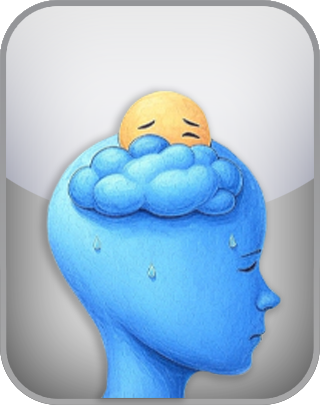Academically reviewed by Dr. Sabina Alispahić, Ph.D., professor of psychology
Zung Depression Test
The Zung Self-Rating Depression Scale (SDS) is a validated, evidence-based self-report tool designed to assess the presence and severity of depressive symptoms. Developed by psychiatrist William W.K. Zung in 1965, the SDS is widely used in clinical and research settings to screen for depression. It evaluates core depressive symptoms across affective, psychological, and somatic domains, providing a comprehensive measure of depression severity.
Question 1 of 20
I feel worthless.
| Disagree | Agree |
NEXT
The Zung Self-Rating Depression Scale (SDS) is a psychological assessment tool designed to measure symptoms associated with depression. It is commonly used in clinical and research settings to identify the presence and severity of depressive symptoms in individuals who may be experiencing depression, regardless of whether a formal diagnosis has been made.
The SDS consists of 20 symptom items, each rated by the individual based on how frequently they experience the symptom. Responses are recorded on a 4-point Likert scale (1 = "A little of the time" to 4 = "Most of the time"), allowing clinicians and researchers to assess both the presence and intensity of each symptom. The scale covers three main symptom clusters: affective (e.g., sadness, crying), psychological (e.g., hopelessness, lack of interest), and somatic (e.g., fatigue, sleep disturbances). Additionally, the questionnaire captures functional impairment in daily life, such as difficulties with work, relationships, or general well-being.
The development of the SDS was grounded in clinical observations and psychometric analyses, ensuring its reliability and validity. It has been translated into numerous languages and is used globally in diverse populations, from primary care settings to mental health clinics. Its brevity and straightforward structure make it a practical tool for screening and monitoring depression.
One of the strengths of the SDS is its ability to quantify depression severity, with scores categorized into ranges indicating normal, mild, moderate, or severe depression. This allows clinicians to tailor treatment plans based on the individual’s symptom profile and track changes over time to evaluate therapeutic effectiveness. Unlike some other depression scales, the SDS emphasizes self-report, empowering individuals to reflect on their experiences and contribute to their care.
In practice, the Zung SDS provides clinicians with a reliable way to screen for depression, guide treatment planning, and monitor recovery. It also facilitates research by providing a standardized measure of depression across studies. As understanding of depression continues to evolve, tools like the SDS play a vital role in advancing both clinical care and mental health research.
The scale measures following symptoms:
Psychological Symptoms: This facet involves cognitive and emotional difficulties, such as loss of interest in activities, feelings of worthlessness, trouble concentrating, and suicidal thoughts. These symptoms reflect the impact of depression on mental functioning, often leading to reduced motivation, impaired decision-making, and a distorted self-image.
Somatic Symptoms: These are physical symptoms associated with depression, including fatigue, appetite or weight changes, sleep disturbances, body aches, and slowed movements. These symptoms highlight how depression affects the body, often contributing to reduced energy and physical functioning in daily life.
Additional Symptoms: This category includes symptoms like guilt, anxiety, and loss of interest in appearance, which may not fit neatly into the other clusters. These reflect the diverse ways depression can manifest, impacting emotional regulation, self-perception, and interpersonal functioning.

 English
English  Español
Español  Português
Português  Deutsch
Deutsch  Français
Français  Italiano
Italiano  Polski
Polski  Română
Română  Русский
Русский  Türkçe
Türkçe  العربية
العربية  日本語
日本語  한국어
한국어  ไทย
ไทย  汉语
汉语  हिन्दी
हिन्दी  Bahasa
Bahasa 